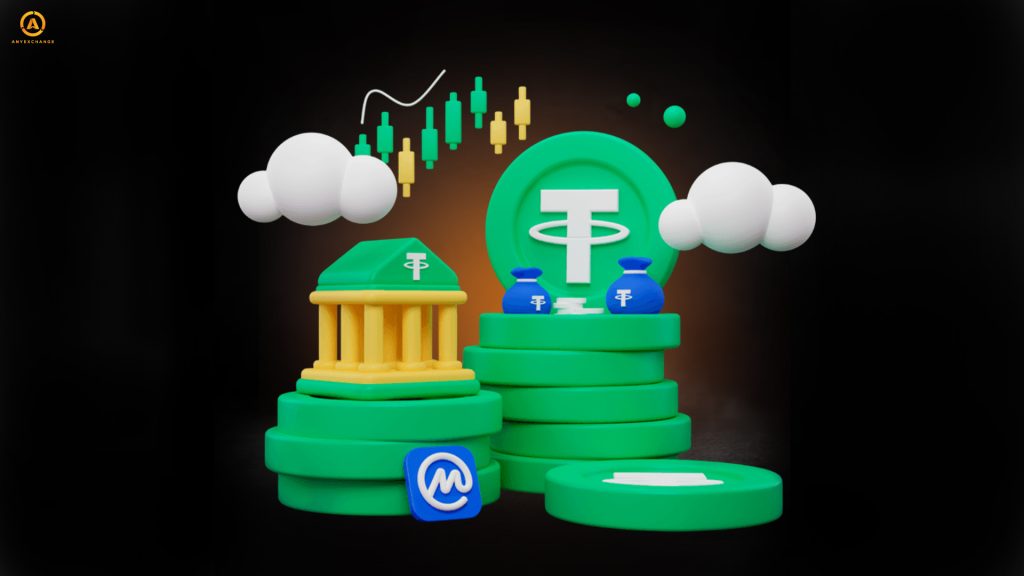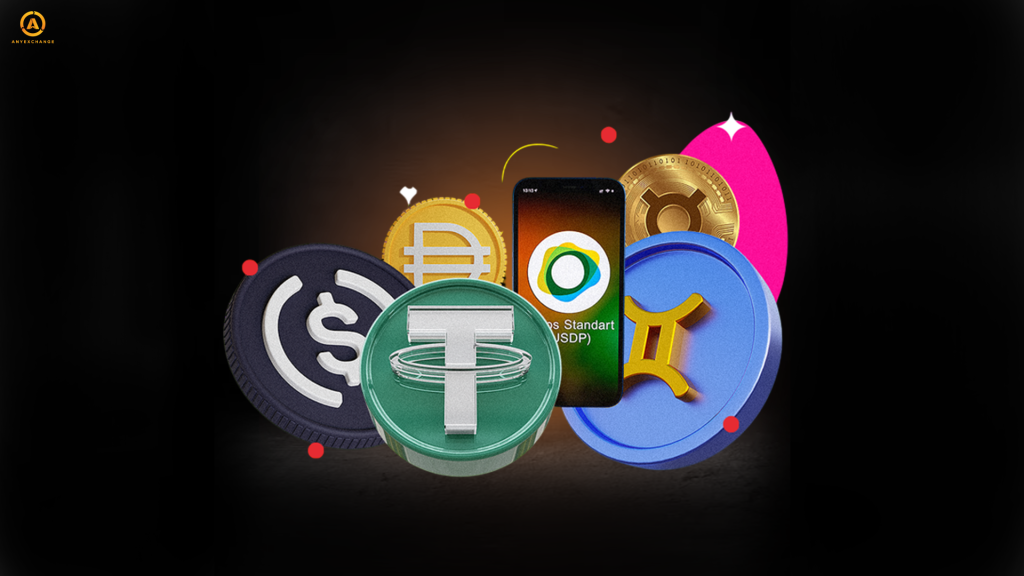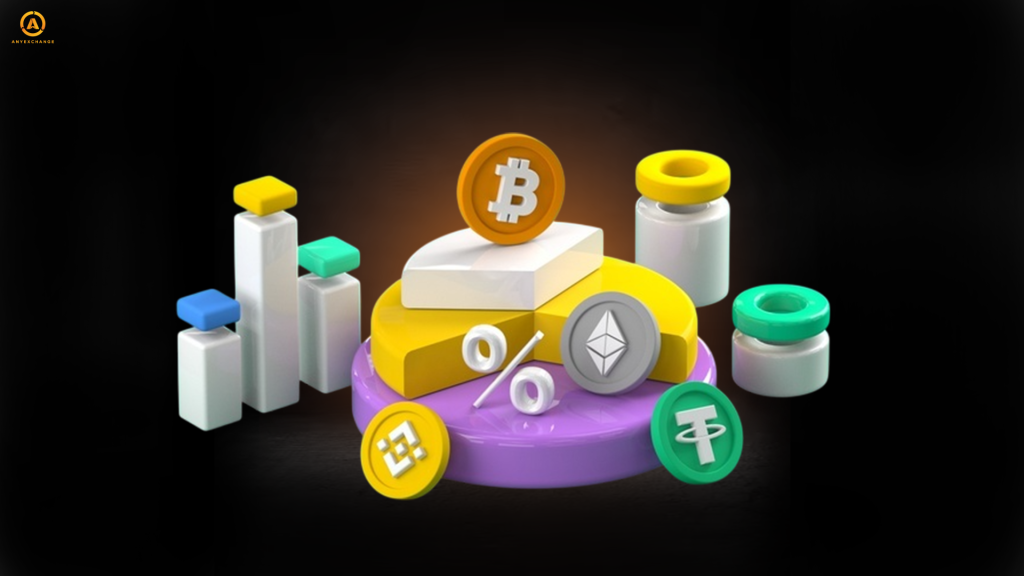
The role of stablecoins in the global economy is increasing with the development of the cryptocurrency sector and the growing global adoption of digital assets.
As a bridge between fiat and cryptocurrencies, stablecoins connect traditional financial systems with the world of high technology and represent a separate class of crypto assets with their own unique characteristics.
How do stablecoins ensure the stability of the crypto market? What do they represent? How do they relate to traditional finance? What are their uniqueness and benefits? Answers to these questions can be found in our article.
What are stablecoins and how do they work?

The main feature of stablecoins is expressed in their very name — “stable coin”. Its stability is the main difference between this class of crypto assets and other cryptocurrencies in a market known for its high volatility.
The stable value of classic stablecoins is supported by fiat currencies to whose exchange rate it is pegged. Typically, the relationship between the price of a stablecoin and the underlying asset fluctuates at a 1:1 ratio with a minimal margin of error. Stablecoins pegged to the US dollar make up the lion’s share of the stablecoin market. The largest of them — USDT, issued by Tether Limited — ranks third in the world in terms of capitalization among all cryptocurrencies.
At the time of writing, according to CoinMarketCap, USDT Tether has a capitalization of about $130 billion.
This class of virtual coins is considered low-risk, as the issuance of stablecoins involves backing the assets to which they are priced. This means that if a stablecoin is pegged to the EUR, for example, it must be backed by cash reserves in bank vaults or sufficient amounts of euros on its balance sheet. If to gold — then the availability of gold (ideally in physical form) backing the coin should be presented on demand. And it is in the provision of reserves that the main advantage of stablecoins over conventional cryptocurrencies lies. Ordinary citizens and traditional financial systems treat this asset class with great confidence, as it is associated with the availability of guarantees and minimal risks.
Currently, authorities around the world are forming legislation on cryptocurrencies, and the regulation of stablecoins in different countries is being implemented first. Stablecoin issuing companies are the first in line for enforcement by regulators. Clear and rather strict requirements are being formulated for stablecoin issuers in terms of legal form, place of registration, authorized capital, availability of reserves, publicity and reporting. In this respect, companies that have issued stablecoins in the past will have to bring their legal form, operational and financial activities into line with the new rules.
Types of stablecoins

If you study the reviews of popular stablecoins (USDT, USDC, DAI), you will notice that they use different security mechanisms. Depending on the approach to collateralization, stablecoins are divided into three types:
- Backed by traditional assets. These are collateralized reserves of fiat currency, precious metals, oil, and securities. This includes coins like USDT, USDC, Paxos Gold.
- Collateralized crypto assets. Reserves are formed from other collateralized cryptocurrencies. A prime example is the DAI stablecoin, which is backed by Ethereum and pegged to the USD.
- Algorithmically backed. Here, reserves are backed by the technologies underlying the stablecoins, and issuance is controlled by smart contracts and algorithms. In this approach, algorithmic mechanisms reduce the supply of tokens by burning or redeeming them when their value falls below the price of the tracked fiat currency. In the opposite situation, new coins are issued.
How stablecoins affect traditional banks

The connection between stable cryptocurrencies and traditional financial systems is expanding and growing. Stablecoins, as a tool for financial inclusion, are becoming more accessible and integrated into a variety of processes in the global economy.
For example, banks are starting to issue their own stablecoins. Last year, for example, the French bank Societe Generale, the country’s third largest, issued EURCV, which is pegged to and backed by the euro. The stablecoin is based on the Ethereum blockchain and is traded on well-known exchanges. EURCV has verified reserves, has been successfully audited by PwC, and is used in various corporate capital management solutions.
In August 2024, Banking Circle, a European payment bank headquartered in Luxembourg, also issued a EURI stablecoin in full compliance with the new MiCA requirements.
Cryptocurrency is increasingly being used by banks as a means of cross-border payments. The use of stablecoins in international payments offers high speed, security and low transaction costs compared to traditional methods of transferring funds abroad.
When it comes to comparing stablecoins and central bank digital currencies (CBDCs), the advantage is still clearly on the side of the former. CBDCs are only planned to be issued by most countries and it is not known how long it will take to realize such projects and what functionality they will have in the end.
Investing in stablecoins: opportunities and risks

Stablecoins have a number of significant advantages over other cryptocurrencies, but they also carry certain risks. Let’s take a look at the strengths and weaknesses of this digital asset class.
Strengths
- Broad applicability of stablecoins in e-commerce. Stablecoins are driving the growth of e-commerce by offering convenient, accessible and low-cost payments. Stablecoins are highly integrated into commerce networks and provide price stability, unlike other highly volatile digital assets.
- High functionality in DeFi. The role of stablecoins in decentralized finance (DeFi) is enormous. They are present in most exchange pairs on exchanges and are an ideal asset for capturing (preserving) value in trading, lending and staking.
- Risk mitigation. Large and individual investors actively use stablecoins to hedge risks when building investment portfolios. They are a type of safe-haven asset that provides portfolio stability when the volatility risks of other assets increase. In such cases, investors simply switch to stablecoins.
- Liquidity. The high availability of stablecoins allows for quick transactions on most trading platforms. There is no need to open a bank account, present documents or go through bureaucratic procedures to make payments. Stablecoins are available all over the world, especially in regions where, for various reasons, it is impossible to conduct traditional banking transactions.
- Reliability. The proximity to traditional financial systems and the regulated nature of stablecoins are factors that ensure a high level of trust among users and investors.
Risks and challenges of stablecoins
- Dependence on central bank monetary policy. Stablecoins and the monetary policies of the countries they are pegged to are closely linked. National central banks have a monopoly on issuing national currencies, so stablecoins can lose their stability due to inflation, rising unemployment, or other macroeconomic factors.
- Centralization. Most stable coins are centralized, i.e. they have an issuing company. In addition, regulatory innovations are indirectly encouraging a shift away from the decentralized principles of stackable coins by placing more and more requirements on companies. This is a departure from Web3’s principles of democratic and fair decentralized systems.
- Counterparty risk. Only in the last year have stablecoin issuers begun to undergo independent audits and to provide more or less transparent public information on collateral provisions. The lack of public information or its unreliability reduces investor confidence and creates additional risks.
- Regulatory risks. Stablecoins are subject to increased regulatory scrutiny, increasing the risk of disclosure of confidential information or blocking of funds.
- Loss of Debinding. The unbundling of a stablecoin from its underlying asset can lead to both individual trading and investment losses, as well as systemic liquidity or even solvency risks.
Stablecoin options
In early fall, the results of a global stablecoin use case study conducted by Castle Island Ventures, Brevan Howard, Artemis and Visa Crypto were released. The analysts were interested in how the world’s population uses stablecoins beyond trading and investing.
They studied the case studies of people in developing countries with the highest rates of real use of stablecoins against the backdrop of the growth of the stablecoin market. Some of the most popular uses of stablecoins inсlude
- Money transfers;
- Conversion of cryptocurrencies;
- Payments for goods and services;
- Salary payments;
- Receiving passive income;
- Preservation of funds in inflationary conditions.
The state of stablecoins today
At the time of writing, the total capitalization of the stablecoin market is approximately $190 billion. 192 stablecoin tokens are listed on the aggregator CoinMarketCap with a total capitalization of approximately $195 billion.
This week, Dutch fintech company Quantoz announced that it has received funding from Kraken and Tether to launch two new stablecoins that are fully MiCA compliant. The EURQ and USDQ tokens, which are pegged to the US dollar and the euro, will be issued on the Ethereum network. By the end of November, the new stable coins will appear on the Kraken and Bitfinex crypto exchanges. This development is interesting because back in late summer, Tether’s CEO called MiCA a threat to stablecoins amid restrictions on access to “unregulated” stablecoins for EU customers by leading crypto exchanges such as OKX, Binance and Coinbase.
At the same time, Tether continues to post impressive financial results. The company’s net profit has reached $7.7 billion since the beginning of the year, and the USDT stablecoin is used by 330 million crypto wallets. Consolidated assets reached an all-time high of $134.4 billion, with USDT’s collateral reserves at $125.47 billion. The company reported investments in key sectors such as artificial intelligence and renewable energy.
Stablecoin’s Future in the Financial systеm
Stablecoins, with their inherent versatility, high applicability and user trust, have little to fear. As an integral part of the cryptocurrency market, they will evolve with and beyond it, offering increasingly efficient use cases compared to fiat currencies.
Thank you for your consideration. Invest safely and profitably!
Through our exchanger, you can convert leading stable coins and other popular cryptocurrencies into electronic money or cash at the most favorable exchange rate. You can also use AnyExchange.best to make fast and anonymous money transfers worldwide.






